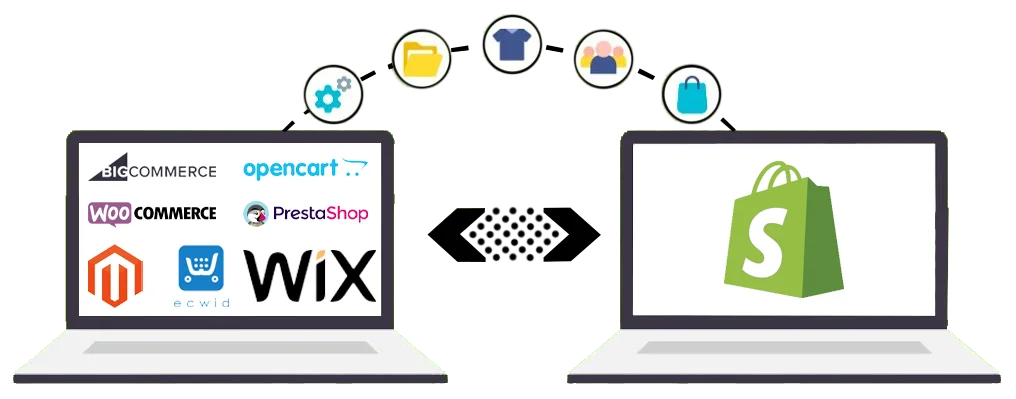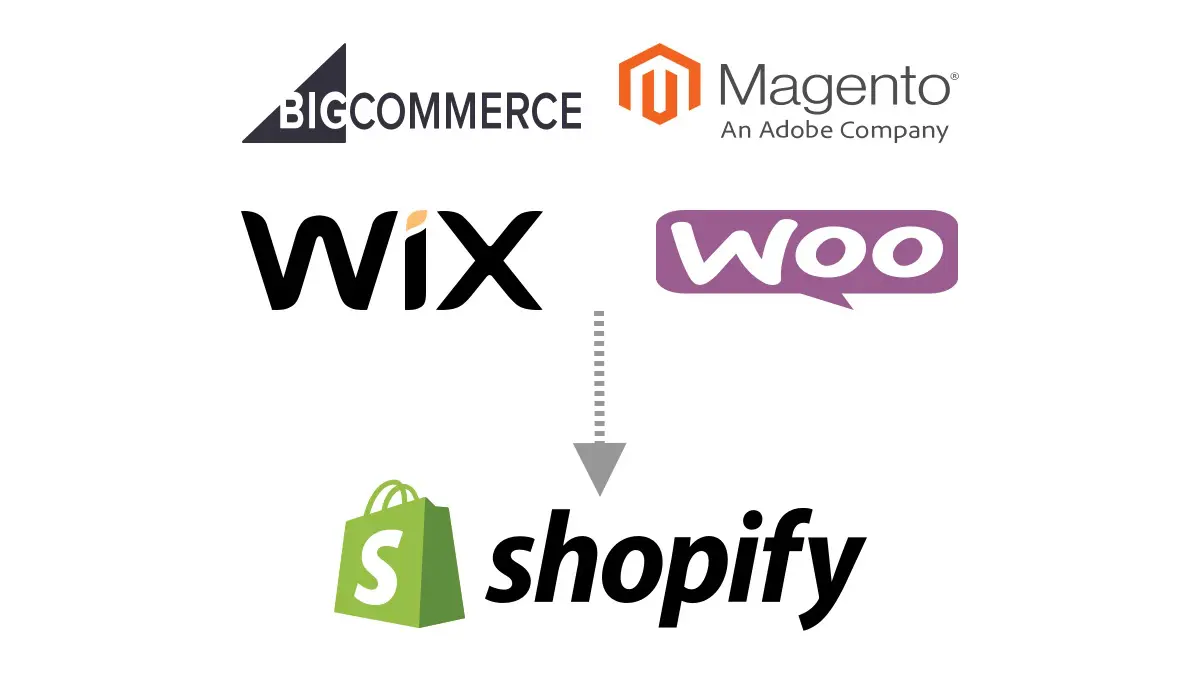In today’s fast-paced e-commerce landscape, businesses often need to adapt and evolve to stay competitive. For many, migrating to a new e-commerce platform like Shopify is a strategic move to improve performance, scalability, and user experience. However, migrating your online store can be a daunting task. That’s where our Shopify migration services come into play. In this ultimate guide, we’ll explore the key aspects of Shopify migration services, including why you might need them, what to look for in a service provider, and the step-by-step process involved.

What are Shopify migration services?
Shopify migration services are specialised solutions designed to help businesses seamlessly transition from their existing e-commerce platform to Shopify. Whether you’re moving from another platform or upgrading from an older version of Shopify, these services are essential to ensure a smooth and successful transition. They encompass a wide range of tasks, including data migration, design customisation, SEO optimisation, and post-migration support. Choosing our Shopify migration services means you’re not only getting a seamless transition but also a trusted partner dedicated to your success in the world of e-commerce.
Why Do You Need Shopify Migration Services?
Seamless Transition: Migrating an e-commerce store is a complex process, involving a lot of data, content, and configurations. Shopify migration services ensure a seamless transition, so your customers won’t notice a thing.
Data Integrity: Your product information, customer data, and order history are invaluable. Shopify migration services make sure your data remains intact during the transition.
Design Customisation: Customise your Shopify store to match your branding and unique needs. Service providers can help with theme selection, design optimisation, and user experience enhancements.
SEO Optimisation: Maintain your search engine rankings and ensure your new Shopify store is fully optimised for search engines. Migrating without SEO considerations can lead to a significant loss in organic traffic.
Technical Support: A dedicated team of experts is available to provide technical assistance before, during, and after the migration. Any issues or complications that arise can be addressed promptly.
Choosing the Right Shopify Migration Service Provider
Selecting the right service provider is crucial to a successful migration. Here are some key factors to consider:
Experience: Look for a service provider with a proven track record of successfully migrating stores to Shopify. Check client reviews and testimonials to gauge their expertise.
Customisation: Ensure the service provider can customise your Shopify store to meet your specific business needs and branding requirements.
Data Migration Expertise: Data is the lifeblood of your e-commerce business. The service provider should have a solid plan for migrating data seamlessly and accurately.
SEO Optimisation: A good migration service should include SEO experts who can help preserve your search rankings or even improve them during the migration.
Post-Migration Support: Find out what kind of support and assistance the provider offers after the migration is complete. Ongoing support is essential to address any issues or adjustments needed.
Budget and Cost: Understand the pricing structure and ensure it aligns with your budget. Be aware of any hidden costs or unexpected charges.
The Step-by-Step Process of a Shopify Migration
Here’s an overview of the typical steps involved in a Shopify migration:
Step 1: Initial Consultation
Discuss your business goals and specific needs with the migration service provider.
Determine the scope of the project, including data migration, design customisation, and SEO optimisation.
Step 2: Data Migration
Transfer product information, customer data, and order history from your existing platform to Shopify.
Ensure data integrity by validating and cross-referencing information.
Step 3: Design Customisation
Customise the look and feel of your new Shopify store to match your branding and improve the user experience.
Select a suitable Shopify theme and optimise it for your needs.
Step 4: SEO Optimisation
Perform SEO audits to identify areas that need improvement.
Optimise meta tags, URLs, and content to ensure your new store ranks well on search engines.
Step 5: Testing
Thoroughly test the new Shopify store to identify and resolve any issues or bugs.
Ensure that all features and functionalities are working as expected.
Step 6: Launch and Post-Migration Support
Launch your new Shopify store and monitor its performance.
Provide ongoing support to address any post-migration issues or adjustments.
Conclusion
Migrating to Shopify can be a game-changer for your e-commerce business, but it’s a complex process that requires careful planning and execution. Shopify migration services play a crucial role in ensuring a successful transition, preserving your data, enhancing your design, and optimising your store for search engines. By choosing the right service provider like Zaczee and following a structured migration process, you can confidently make the move to Shopify and enjoy the benefits of a more robust and scalable e-commerce platform. Remember, investing in a smooth transition now will pay off in the long run as you attract more customers and increase your online sales.

